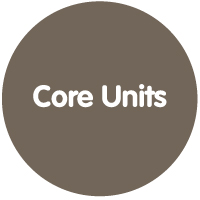 |
|
Science Communication
Coordinator
Joana Lobo Antunes
Contributors
Ana M. Sanchez
António Granado
James Yates
Romeu Costa
Vasco Trigo
Objectives
By the end of the Curricular Unit the students will be able to:
- Identify the specificities of academic scientific writing and organize their ideas and results in that format
- Be able to outline an idea visually and construct a graphical abstract
- Make the most out of a poster presentation and oral communication
- Understand how scientific issues can be communicated to non-specialist audiences
Syllabus
The Science Communication curricular unit focuses on the tools necessary for clear and effective presentation of scientific subjects, both directed to peers (eg. writing papers or attending scientific meetings) and to lay audiences.
This practical module envisages communication as a whole process, training students in the different topics;
- How to read a scientific paper
- Writing different sections of a scientific paper
- Preparing a poster for a scientific meeting
- Making slides
- Presenting their work – posture, voice, content
- Talking to lay public
- Talking to the media
Evaluation
Assessment will be done through communication exercises proposed to the students. At the end of the module, students are invited to put in practice what they have learned by writing three different types of summaries of a scientific abstract; one directed to other scientists (albeit from other fields), one for a 12-year old child (typically the age aimed at by the general media), and a third where conciseness is taken to the limit of a twitter post (140 characters).
Main bibliography
- Alley, Michael (1996) The craft of scientific writing. Springer
- Beveridge, William I.B. (2004) The Art of Scientific Investigation. Blackburn Press
- Murphy, Raymond (2005) English Grammar in Use. Cambridge University Press
- Olson, Randy (2009) Don't Be Such a Scientist: Talking Substance in an Age of Style. Island Press
back to core units
|

